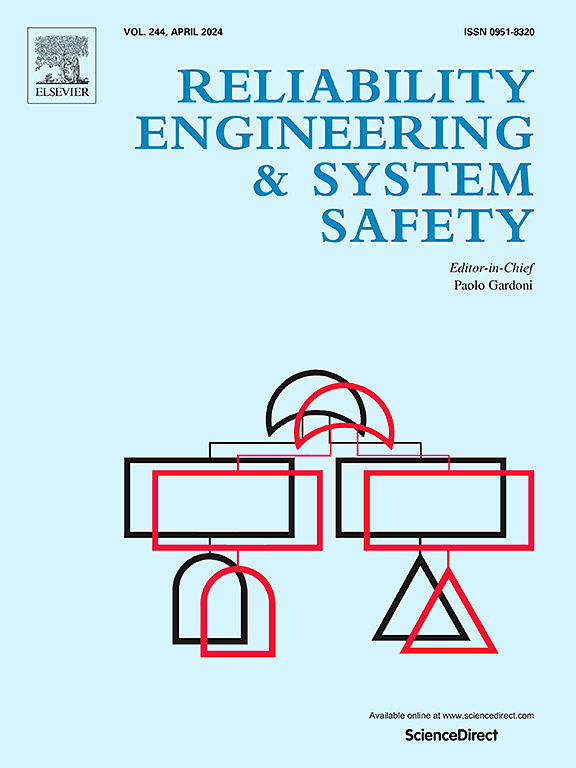Adaptive frequency attention-based interpretable Transformer network for few-shot fault diagnosis of rolling bearings
IF 9.4
1区 工程技术
Q1 ENGINEERING, INDUSTRIAL
引用次数: 0
Abstract
In recent years, deep learning-based approaches have demonstrated superior performance in few-shot fault diagnosis. Nevertheless, many of these methods lack explicit interpretability, making it difficult to intuitively understand their diagnostic logic. To tackle this issue, an interpretable deep learning model called the adaptive frequency attention-based interpretable Transformer network is proposed for few-shot fault diagnosis of rolling bearings. From a frequency interpretability perspective, the standard Transformer network architecture has been innovatively improved. First, an adaptive frequency attention mechanism is developed that quantifies the importance of various frequency components during the diagnostic process, adaptively identifying and emphasizing key frequency components closely associated with fault modes. This boosts both diagnostic performance and model interpretability. Second, to enhance the diversity of fault features under limited sample conditions, a multiscale convolutional architecture is developed to replace the linear projection layer in input embedding. This architecture employs parallel multiscale convolution kernels to extract both local and global fault features, enabling a comprehensive capture of fault information and further supporting the interpretability of the diagnostic model. Finally, Experiments on interpretable few-shot fault diagnosis are carried out on three rolling bearing datasets, and the diagnostic results further validate the effectiveness and interpretability of the proposed method.
基于自适应频率关注的可解释变压器网络在滚动轴承小故障诊断中的应用
近年来,基于深度学习的方法在小样本故障诊断中表现出优异的性能。然而,许多这些方法缺乏明确的可解释性,因此很难直观地理解其诊断逻辑。为了解决这一问题,提出了一种可解释深度学习模型——基于自适应频率关注的可解释变压器网络,用于滚动轴承的小故障诊断。从频率可解释性的角度来看,标准Transformer网络体系结构得到了创新性的改进。首先,建立了自适应频率关注机制,量化诊断过程中各频率分量的重要性,自适应识别和强调与故障模式密切相关的关键频率分量。这提高了诊断性能和模型可解释性。其次,为了增强有限样本条件下故障特征的多样性,提出了一种多尺度卷积结构来取代输入嵌入中的线性投影层;该结构采用并行多尺度卷积核提取局部和全局故障特征,实现故障信息的全面捕获,并进一步支持诊断模型的可解释性。最后,在三个滚动轴承数据集上进行了可解释少弹故障诊断实验,诊断结果进一步验证了所提方法的有效性和可解释性。
本文章由计算机程序翻译,如有差异,请以英文原文为准。
求助全文
约1分钟内获得全文
求助全文
来源期刊

Reliability Engineering & System Safety
管理科学-工程:工业
CiteScore
15.20
自引率
39.50%
发文量
621
审稿时长
67 days
期刊介绍:
Elsevier publishes Reliability Engineering & System Safety in association with the European Safety and Reliability Association and the Safety Engineering and Risk Analysis Division. The international journal is devoted to developing and applying methods to enhance the safety and reliability of complex technological systems, like nuclear power plants, chemical plants, hazardous waste facilities, space systems, offshore and maritime systems, transportation systems, constructed infrastructure, and manufacturing plants. The journal normally publishes only articles that involve the analysis of substantive problems related to the reliability of complex systems or present techniques and/or theoretical results that have a discernable relationship to the solution of such problems. An important aim is to balance academic material and practical applications.
 求助内容:
求助内容: 应助结果提醒方式:
应助结果提醒方式:


